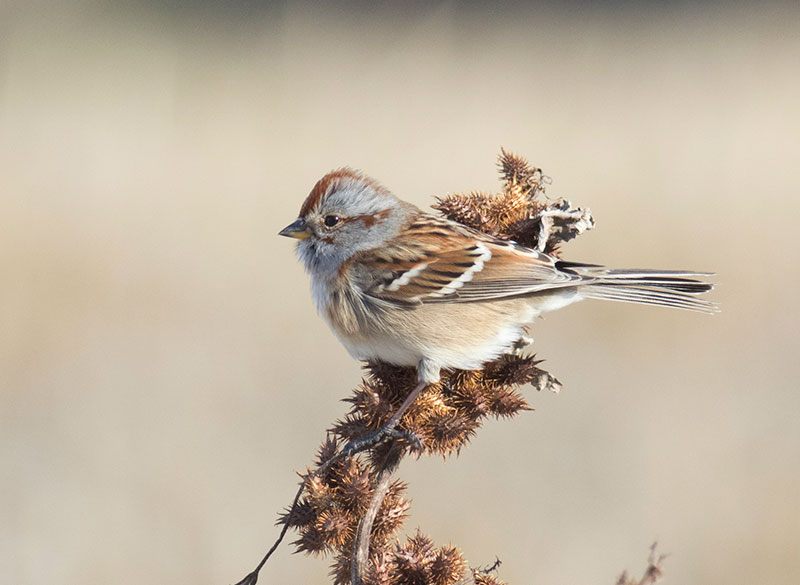American Tree Sparrows
2/18/18
By David Brown
The Great Backyard Bird Count is this weekend. Amateur bird watchers can submit their bird sightings to this citizen science project. Simply count birds in your own yard for a minimum of 15 minutes and submit the details through the website. Full details on how to participate can be found at http://gbbc.birdcount.org/.
American tree sparrows are one common species that may be seen during the count. These small sparrows weigh less than an ounce and have a 9.5 inch wingspan. They are found in our area from November through March. American tree sparrows have rusty caps and eyelines. The unstreaked breast often has a black dot in the middle. The distinctive bicolored beak is black on top and yellow on bottom. Males and females are identical in appearance.

American Tree Sparrow
Chipping sparrows are similar but have black eyelines and black beaks. Chipping sparrows are found the opposite time of the year, arriving in April and staying through October. Field sparrows are also similar but have white eyerings and a pink beak.
In winter American tree sparrows eat seeds and berries. They are often found in small flocks in weedy and brushy areas especially near forest edges and marshes. They also come to yards and seed feeders. Despite the name they usually feed low to the ground, but will fly up to the safety of trees if disturbed. In summer they incorporate insects into their diet on their breeding grounds in Alaska and northern Canada.
Watch for early signs of spring migration over the next few weeks. Large migrating skeins of Canada geese, snow geese, and tundra swans fly high overhead and are often heard before seen in quiet areas. Raptors such as golden eagles and rough-legged hawks are beginning to head back to Canada. As the days get longer and warmer, songbirds are beginning to sing. American tree sparrows have a high-pitched musical song that can often be heard locally in February and March before they migrate north. Becoming familiar with birds is one of the best ways to get tuned into the cycle of the seasons as you notice species arriving in the same order year after year.